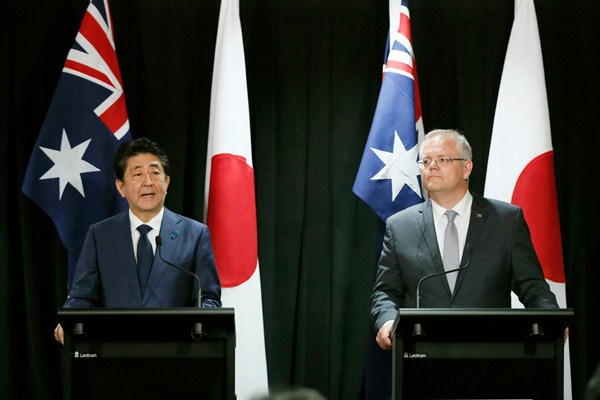World leaders gathered in Singapore this week for the 13th annual East Asia Summit, the premier meeting for regional heads of state to discuss political and security issues. It comes amid rising tensions between Asia’s two largest powerbrokers, the United States and China. Their standoff has left Japanese Prime Minister Shinzo Abe in a position to take the lead as the advocate for maintaining and even expanding a multilateral order in the region. His full-court press, at a time of trade wars and rising nationalism, is a litmus test for international rules and free markets.
The Abe administration continues to trumpet the idea of a “free and open Indo-Pacific” as Japan’s long-term approach to the region, backed by international rules and norms. It is hardly a new development, despite some recent promotion and symbolic buy-in from the Trump administration. Indeed, Abe introduced the idea more than a decade ago, during his first stint as prime minister in 2007, in a speech to the Indian Parliament. He declared then that Japan and India were natural partners through the “confluence of two seas”—the Pacific and Indian Oceans—that were “bringing about a dynamic coupling as seas of freedom and of prosperity.”
“A ‘broader Asia’ that broke away geographical boundaries is now beginning to take on a distinct form,” he added.

